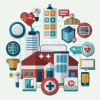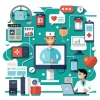
Types Of Health Management Information Systems
In today’s healthcare landscape, the role of health management information systems (HMIS) is more critical than ever. These systems streamline operations, improve patient care, and support data-driven decision-making.
This article will explore the different types of healthcare information systems, their key benefits, and the essential components of an effective HMIS.
What Is A Health Management Information System?
An HMIS is a comprehensive system designed to manage healthcare data. This includes collecting, storing, managing, and transmitting a patient’s electronic medical records (EMR), hospital operational management, or a system supporting healthcare policy decisions.
Health Information Software is integral to these systems, ensuring that data is accurate and accessible.
Types Of Health Management Information Systems
Healthcare management information systems (HMIS) integrate technology to streamline care and operations. There are several types of HMIS, each playing a crucial role in transforming healthcare:
1. Clinical Information Systems (CIS)
Clinical Information Systems are designed to support patient care delivery. These systems provide healthcare professionals with critical patient information, including medical history, medication lists, and test results. CIS improves the accuracy of diagnoses and treatment plans.
2. Management Information Systems (MIS)
Management Information Systems in healthcare, including various types of hospital management systems, are used to manage the administrative aspects of healthcare facilities. These include staff scheduling, financial management, and resource allocation. By optimizing administrative functions, MIS helps healthcare providers improve efficiency and reduce costs.
3. Decision Support Systems (DSS)
Decision Support Systems help medical professionals make well-informed choices. DSS uses data analytics to provide evidence-based recommendations for patient care. This system can analyze large datasets to identify trends and patterns that support clinical decision-making.
4. Electronic Medical Records (EMR) Systems
Electronic Medical Records Systems are electronic copies of patients’ paper charts. EMR systems are vital for maintaining comprehensive patient records, which can be easily accessed and updated by healthcare providers. This ensures continuity of care and improves patient outcomes.
5. Health Information Exchange (HIE)
Health Information Exchange systems enable the sharing of patient information across different healthcare organizations. HIE facilitates the seamless transfer of patient data, ensuring that healthcare providers have access to up-to-date information regardless of where the patient receives care.
6. Telehealth Systems
Telehealth Systems allow patients to receive care remotely. These systems include virtual consultations, remote monitoring, and telemedicine services. Telehealth expands access to healthcare, especially in rural and underserved areas.
Key Benefits Of Health Management Information Systems
Health information system management use technology to enhance care quality, operational efficiency, and decision-making. They improve patient outcomes, streamline operations, and reduce costs significantly.
1. Improved Patient Care
- HMIS enhances the quality of patient care by providing healthcare professionals with accurate and up-to-date information.
- This leads to better diagnosis, treatment, and patient outcomes.
A well-structured patient feedback software like LazyMonkey helps you understand patient needs and improve healthcare services effortlessly.
2. Increased Efficiency
- By automating administrative tasks, HMIS reduces the workload on healthcare staff.
- This allows healthcare staff to focus more on patient care, increasing the overall efficiency of healthcare facilities.
3. Enhanced Data Management
- Health Information Software ensures that patient data is securely stored and easily accessible.
- This lowers the possibility of errors and increases data accuracy.
4. Better Decision-Making
- Decision Support Systems and other types of information systems in healthcare provide healthcare professionals with data-driven insights.
- This supports better clinical and administrative decision-making.
5. Cost Reduction
- Implementing HMIS can lead to significant cost savings.
- By streamlining operations and reducing inefficiencies, healthcare facilities can lower their operational costs.
Benefits Of Clinical Information Systems
- Improved Patient Care: Clinical information systems (CIS) streamline medical processes, reducing errors and ensuring patients receive accurate, timely care.
- Enhanced Data Accessibility: Healthcare professionals can access patient records instantly, allowing for better coordination between departments.
- Increased Efficiency: Automated workflows reduce administrative burdens, speeding up tasks like scheduling and billing.
- Data-Driven Decisions: CIS collects comprehensive patient data, helping healthcare providers make informed decisions based on real-time information.
- Cost Savings: By improving operational efficiency and reducing redundant tasks, healthcare facilities save on operational costs.
What Is Clinical Information System?
A Clinical Information System (CIS) is a digital platform used to collect, store, and manage patient data. It streamlines medical workflows, enhances decision-making, and improves patient care by providing healthcare professionals with real-time access to patient records, diagnostic information, and treatment history.
Types of Clinical Information Systems
- Electronic Health Records (EHR): Digital version of patient charts, storing medical history, treatments, and medications.
- Radiology Information Systems (RIS): Manages imaging orders and results, improving the workflow for radiologists.
- Laboratory Information Systems (LIS): Automates lab operations, including test requests, sample tracking, and results reporting
- Pharmacy Information Systems: Tracks medication orders, automates dispensing, and prevents drug interactions.
- Patient Monitoring Systems: Real-time monitoring of vital signs, providing instant alerts for critical changes.
Components Of Health Management Information System
An effective Health Management Information Systems (HMIS) integrates essential components for efficient healthcare data management. These components enhance patient care, operational efficiency, and decision-making in healthcare settings. Let’s explore the key components:
1. Data Collection and Storage
An effective HMIS must have robust data collection and storage capabilities. This ensures that all relevant patient and operational data is captured and securely stored.
2. User-Friendly Interface
The interface of HMIS Software should be intuitive and user-friendly. This ensures that healthcare professionals can easily access and use the system without extensive training.
3. Integration with Other Systems
HMIS should be able to integrate with other healthcare information systems. This facilitates the seamless sharing of data and improves overall system efficiency.
4. Security Features
Data security is paramount in healthcare. An effective HMIS must have strong security features to protect patient data from unauthorized access and breaches.
5. Support and Maintenance
Regular support and maintenance are essential for the smooth functioning of HMIS. This covers user assistance, troubleshooting, and software updates.
Health Management Information System in Primary Health Care
A hospital management information system in primary health care collects and manages data on community health services. It helps streamline patient records, improve resource allocation, monitor health trends, and support decision-making for preventive care, vaccinations, and treatment of common illnesses at the community level.
Electronic Health Management Information System
An Electronic Health Management Information Systems (EHMIS) integrates health data, providing centralized management of patient information. It supports healthcare operations like billing, appointments, and reporting, allowing for better coordination, faster decision-making, and improved healthcare delivery through easy access to real-time data.
Conclusion
Understanding different types of health information systems (HMIS) and their benefits is crucial for modern healthcare. These systems improve patient care, and operational efficiency, and support data-driven decision-making.
Read more about patient care platform.
Investing in effective HMIS enhances care quality, reduces costs, and leads to better patient outcomes and a more efficient healthcare system.
Frequently Asked Questions?
What Is An HMIS?
An HMIS is a system designed to manage healthcare data, including patient records, operational management, and healthcare policy support.
How Does An HMIS Improve Patient Care?
HMIS improves patient care by providing healthcare professionals with accurate and up-to-date information, leading to better diagnoses and treatment plans.
What Types Of Information Systems Are Used In Healthcare?
Types of information systems in healthcare include Clinical Information Systems, Management Information Systems, Decision Support Systems, Electronic Medical Records Systems, Health Information Exchange, and Telehealth Systems.
How Does HMIS Ensure Data Security?
HMIS ensures data security through robust security features, including encryption, access controls, and regular security updates.
Enhance Patient Care and NABH Compliance with LazyMonkey
LazyMonkey is your all-in-one solution for improving patient care, retaining more patients, and meeting NABH standards. Our powerful QR-based feedback tool enables you to capture real-time insights from patient feedback, discharge surveys, staff and doctor evaluations, and clinical research, while also streamlining inter-departmental communication.
Transform your healthcare facility today - reach out to us at [email protected], or request a demo here!
Elevate Your Restaurant Experience with LazyMonkey
LazyMonkey’s QR-based feedback system helps you gather real-time insights from customers, track satisfaction levels, and enhance the dining experience. Get instant feedback on your menu, service, and ambience, and make data-driven improvements to boost repeat customers and reviews.
Improve your restaurant today – reach out to us at [email protected], or request a demo here!
Empower Student Engagement and Campus Improvement with LazyMonkey
LazyMonkey offers a seamless way to gather student feedback, track satisfaction, and enhance campus life. From course evaluations to dorm feedback, our QR-based solution makes it easy to capture valuable insights and improve student retention.
Upgrade your university experience – contact us at [email protected], or request a demo here!
Streamline Feedback and Drive Performance Across Your Enterprise/Franchise with LazyMonkey
Whether you manage one or multiple locations, LazyMonkey’s QR-based feedback system helps you gather real-time employee and customer feedback. Improve operational efficiency, track satisfaction, and make data-driven decisions to enhance brand consistency and growth.
Transform your franchise today – reach out to us at [email protected], or request a demo here!
Enhance Customer Satisfaction and Service Standards in Banking with LazyMonkey
LazyMonkey empowers banks to capture real-time feedback from clients across branches. Improve customer experience, assess service quality, and ensure regulatory compliance with our QR-based solution, helping you retain clients and meet banking standards.
Elevate your bank’s customer care – contact us at [email protected], or request a demo here!
Boost Customer Engagement and Mall Satisfaction with LazyMonkey
LazyMonkey’s QR-based feedback tool enables you to collect feedback from shoppers, track satisfaction, and enhance the mall experience. Gather insights on store services, cleanliness, and entertainment to create an unmatched customer journey.














